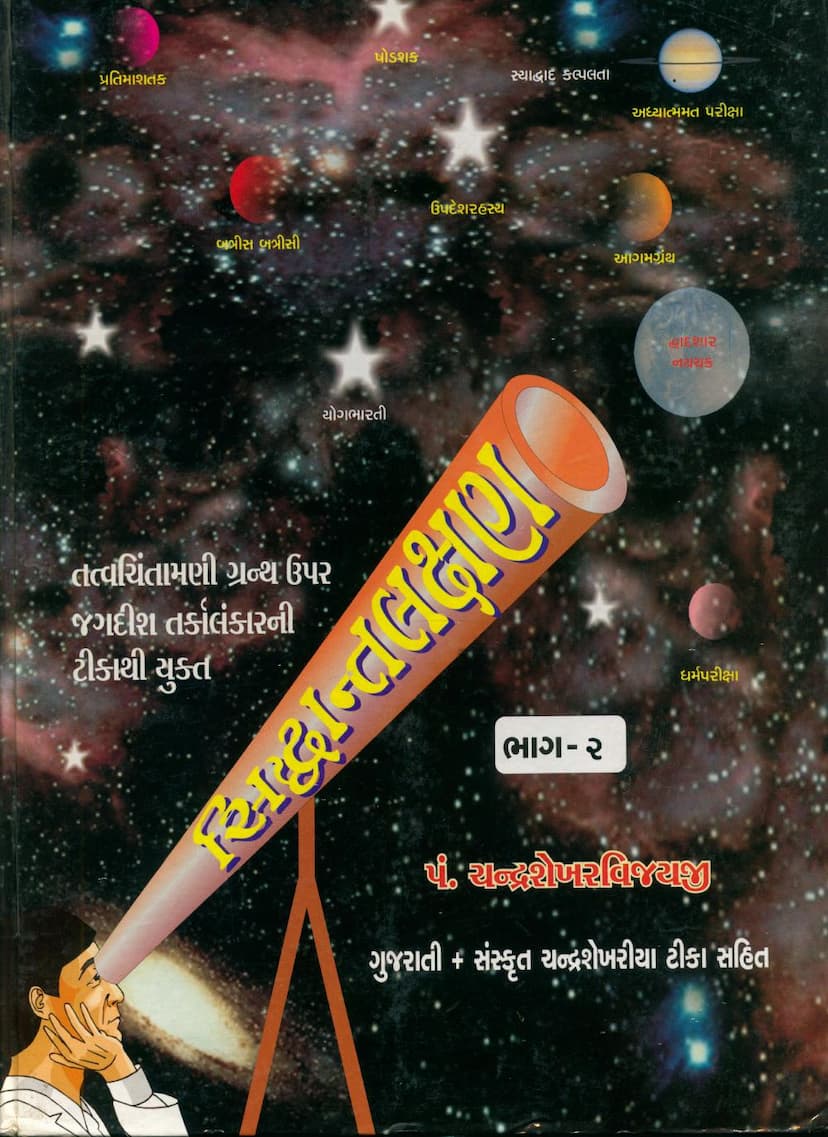Siddhant Lakshan Part 02
Added to library: September 2, 2025

Summary
The book "Siddhant Lakshan Part 02" by Chandrashekharvijay, published by Kamal Prakashan Trust, is a philosophical discourse within Jainism that delves into the intricate details of logical reasoning and the principles of reality as understood in Jain philosophy. The text, particularly the second part, appears to focus on advanced concepts of logic and their application to Jain principles, likely building upon foundational knowledge.
The provided text is a segment of the "Chandra Shekharoya" commentary on the "Siddhant Lakshan" text, which itself seems to be a commentary on a foundational work about "Lakshan" (characteristics or definitions) within Jain philosophy. The text primarily engages with complex logical arguments and counter-arguments, particularly in the context of "Hetvabhasa" (fallacies of reasoning) and the precise definition of a valid inferential argument ("Anumana").
Here's a breakdown of the key themes and discussions presented in the excerpt:
1. Complexities of Logical Definitions (Lakshana): The core of the discussion revolves around refining the definition of a valid inference, specifically addressing the conditions under which an absence ("Abhava") can be considered a valid indicator ("Lakshana"). This involves meticulously dissecting the requirements for establishing a connection between a cause ("Hetu") and an effect ("Sadhy").
2. Addressing Logical Fallacies (Hetvabhasa): A significant portion of the text is dedicated to analyzing and refuting potential logical fallacies that could arise when defining or applying these concepts. This includes detailed examinations of: * Avyapti (Under-generality): The fallacy where a definition or rule doesn't cover all instances it should. * Ativyapti (Over-generality): The fallacy where a definition or rule applies to instances it shouldn't. * Asambhav (Impossibility): Situations where the definition or rule is inherently impossible to fulfill.
3. Detailed Analysis of Specific Inferences: The text delves into numerous examples of inferences to illustrate its points and test the validity of the proposed logical definitions. These examples often involve: * Sensory Perception and Inference: Discussing how the presence of smoke ("Dhum") implies the presence of fire ("Vahni") and how the absence of one relates to the absence of the other. * Subtle Philosophical Concepts: The text engages with concepts like the nature of existence, the relationship between cause and effect, and the role of different types of relationships (e.g., Samyoga, Samavaya, Taadatmya, Kaalika). * Theories of Relations and Properties: Discussions on whether relationships like "having" (Vrittitva) or "being related to" (Sambandh) are intrinsic or extrinsic, and how these definitions impact logical arguments.
4. The "Chandra Shekharoya" Commentary: The text highlights a specific commentary called "Chandra Shekharoya." This commentary seems to be dissecting and clarifying the original "Siddhant Lakshan" text, offering interpretations and solutions to the complex logical problems presented. The author of this commentary, Chandra Shekharvijay, seems to be engaging with the views of other prominent logicians like Jagdish Tarkalankar.
5. Refinement of Definitions: The text demonstrates a rigorous process of refining definitions. For instance, the meaning of terms like "anadhikaran" (non-inherence) and the various relationships between things are debated and clarified to ensure logical precision.
6. The Importance of "Yadṛśa" (As it is): A recurring theme is the importance of considering the specific nature ("Yadṛśa") of relationships and properties, rather than making overly broad or generalized assumptions. This is crucial for avoiding logical fallacies.
7. Interplay of Different Philosophical Schools: The text references and debates with different schools of thought within Indian logic, particularly evident in the discussion of the "Sārvabhauma" (universal) view versus more specific interpretations.
In essence, the book "Siddhant Lakshan Part 02" (or this specific excerpt) is a deep dive into the philosophy of Jain logic (Nyaya). It aims to establish a precise and unassailable framework for understanding reality through logical reasoning, ensuring that inferences are valid and free from fallacies, particularly in the context of Jain metaphysical principles.
The excerpt showcases a scholarly debate, typical of Indian philosophical traditions, where each point is meticulously examined, counter-arguments are presented, and refined definitions are proposed to achieve a nuanced understanding of complex logical and ontological issues. The text is highly technical and requires a background in Indian logic and Jain philosophy to fully comprehend its depth.